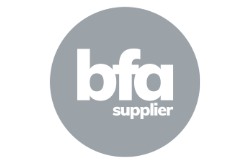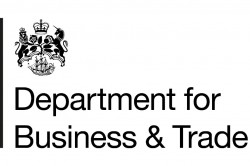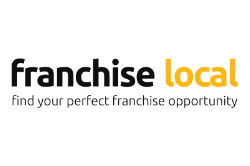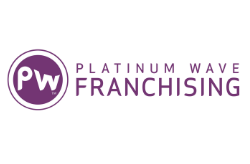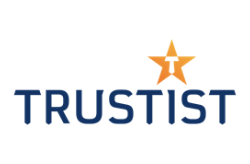After rent and staff costs, business rates are often the third biggest outgoing for many franchises. Just about any building used for non-domestic purposes is liable for business rates, so the recent changes to rates are a significant consideration for many franchisees, both big and small.
Business rates are essentially a tax charged on most buildings or parts of a building that are used for non-domestic purposes, such as offices, shops, pubs and warehouses. Basically, if you use a property for your business, you – or your franchisor – will probably have to pay business rates.
The rates are primarily based on a property’s rateable value. This is an estimate of what it would cost if it were to be rented on the open market and is determined by the government through an assessment of property values. This value can go up or go down, depending on how the property market has changed in that area. And although rates were last reviewed back in 2010, this assessment usually happens every five years and the values used are always taken from two years earlier. So the last time rates were set, they were based on the resale value of properties in 2008. The final figure that businesses need to pay is determined by multiplying the rateable value from two years ago by a figure set by the government.
The rates they are a-changing
The new business rates that came into effect at the start of April are based on property values from April 2015. This recalculation has caused a stir because it should, in theory, have happened two years ago. The government controversially delayed it to help businesses avoid any sharp changes to their business rate bills at that point and prevent disruption to the 2015 general election. But since businesses have been paying the same rates since 2008, a lot has changed when it comes to property prices and many businesses are now going to have to adjust to a significant change in their costs. In London and the South East, for example, there have been steep price rises in many areas while some less prosperous areas have had property values fall dramatically. This, of course, is going to affect the business rates bills for many.
But the changes won’t necessarily mean your rates will go up. The concern about these changes is that a large number of companies in the UK that have properties with a rateable value of over £15,000 could face rising bills, as rents have risen since the recession. That said, unless you’re in an area that has experienced a huge amount of change in property prices, such as in London, the likelihood is that you probably won’t be affected too drastically.
For franchisees, the impact of the rates review on your business depends on what’s in your franchise agreement. Some franchisees are responsible for paying rates themselves while for others head office takes care of it. But even if business rates are paid centrally by your franchisor, it’s still worth making sure you stay informed about the rates for your property.
Finding some respite
Different relief options are available in England, Scotland, Wales and Northern Ireland. Some properties are eligible for discounts from the local council and you – or your franchisor if they pay your business rates – should contact them if you think you’re entitled to a relief you’re not getting. For example, if you’re based in England, then from April 2017 if your property has a rateable value of less than £15,000 – or if you only use one property – you could be eligible for a small-business rate relief package. If you have only one building and your rateable value is less than £12,000, you won’t pay business rates at all and you can claim a 100% refund from your council. For properties with a rateable value between £12,001 and £15,000, the rate of relief will start at 100% and gradually go down to 0%.
And depending on the sector your business is operating in and the value of equipment and machinery on the property, you could be eligible for other types of relief. If you’re a charity or sports club, for example, you might be able to shave off up to 80% of your bill. Similarly, if your business is in a rural area with a local population of below 3,000 you can get anywhere from 50% to 100% off your business rates bill.
Even if you don’t qualify for the small business rate relief or if you have more than one property, you’re still considered a small business if your property has a rateable value below £51,000 or £25,500 in London. In this case, your bill can be calculated using the new small business multiplier which will be 46.6p from April 1 2017, instead of the standard 47.9p, which can save you money.
And if you acquire a second property after April 1 this year, you’ll continue to get any existing relief on your main property for 12 months. After this, if the total rateable value of all your properties is less than £20,000 – £28,000 in London – and none of your other properties have a rateable value above £2,900, you may still be able to get small business rate relief on your main property.
On top of these measures, the government is providing a transitional arrangement to help businesses adjust to new rates, which limits the amount bills go up each year. Businesses facing higher rates will see their bills go up in steps over the next five years and those set to benefit from lower rates will watch their bills gradually fall over the same period. And in response to widespread backlash against the suddenness and severity of the latest rates review, chancellor Philip Hammond unveiled a relief package in his spring budget that gave councils powers to distribute £300m worth of discretionary relief to businesses hardest hit by the rises. If your franchise is being affected, this is worth exploring. So while some franchises will undoubtedly be left harder off from this month onwards, there are plenty of relief options that should help smooth the transition.

Jessica Shears
As head of accounts at Dennis & Turnbull, Shears uses her decade-long experience as a chartered accountant and business consultant to support franchises throughout the country.

Jessica Shears
As head of accounts at Dennis & Turnbull, Shears uses her decade-long experience as a chartered accountant and business consultant to support franchises throughout the country.






